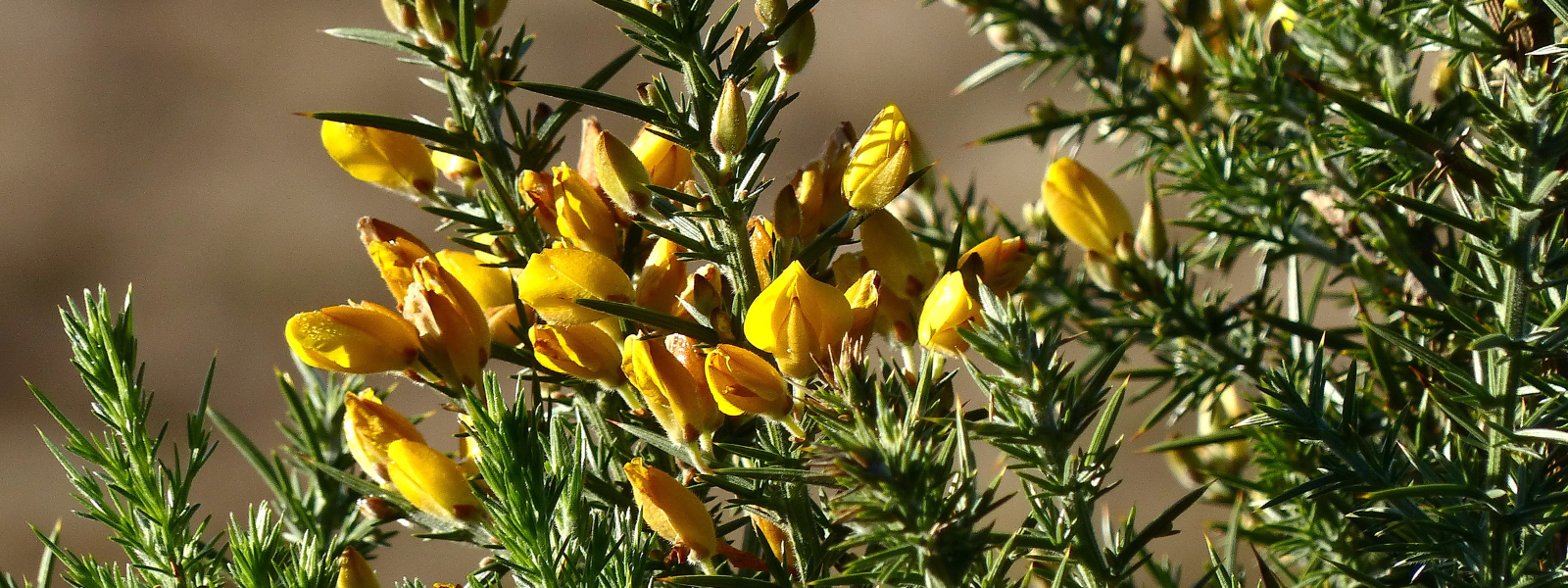
Common Name
Gorse, Irish furze, Common gorse, European gorse, Golden gorse
Scientific Name
Ulex europaeus
Family
Fabaceae
Lifecycle
Perennial
Seasons of Growth
Year-round
Key Distinguishing Feature
Thorny shrub with bright yellow flowers
• Growth Form: Gorse is a dense, spiny shrub that can grow up to 2-3 meters (6.5-10 feet) in height. It has a sprawling, bushy growth form.
• Leaves: The leaves are small, scale-like, and reduced to spines. They are dark green and inconspicuous.
• Flowers: The flowers are bright yellow and pea-like, with a distinctive coconut-like fragrance. They are borne in small clusters along the stems.
• Fruit: The fruit is a small, hairy legume pod containing seeds.
• Habitat: Gorse is commonly found in open areas, grasslands, heathlands, and disturbed sites. It is native to parts of Europe but has naturalized in other regions, including North America, where it is considered invasive.
Ecological Impact:
• Gorse is considered invasive in some regions, particularly in parts of North America, where it can form dense, impenetrable thickets. It outcompetes native vegetation and alters fire regimes.
• The dense growth and spiny nature of gorse can make it unsuitable for livestock grazing.
Control Methods:
• Control of gorse often involves a combination of mechanical, chemical, and cultural methods.
• Mechanical methods include cutting, mowing, or burning to reduce its biomass and seed production.
• Herbicides may be used for control, but care must be taken to use them safely and effectively, following local regulations.
• Preventing the establishment of gorse through vigilant monitoring and early removal is important to prevent its spread.
Gorse is a challenging invasive shrub that requires active management to prevent its spread and protect native ecosystems. Local agricultural authorities often provide guidance on the best control practices for this invasive species.
Key Products for Control:
-
Indigo MetForce - Metsulfuron Methyl
-
Indigo Rapid Fire 800 - Glyphosate (present as acid and ammonium salt)
-
Indigo Rapid Fire 510 - Glyphosate (present as the isopropylamine salt)
-
Envu Method - Aminocyclopyrachlor (present as the potassium salt)




